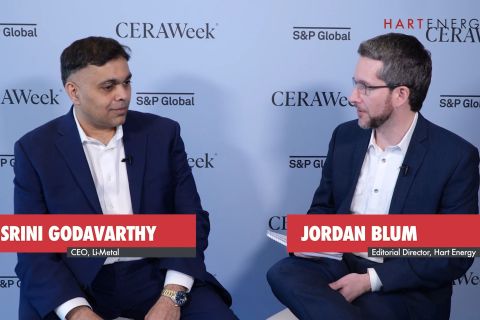
The new focus on ESG issues in the oil and gas industry could be a great opportunity for ambitious executives who were previously overlooked—especially women—to shift corporate culture, contribute to the bottom line and make significant career moves. (Source: Hart Energy; Shutterstock.com)
Oil and gas has traditionally been a male dominated industry* with a narrow view of what defines leadership. But the world is changing. The work isn’t just about putting a hole in the ground and extracting resources anymore. Oil and gas companies are making more of an effort on environmental and sustainability issues while paying more attention to corporate social responsibility. Success today means working with a broader community of various stakeholders to make sure projects are operating safely, environmentally, ethically and in accordance with regulations and local laws.
This new focus on ESG issues in the oil and gas industry opens up opportunities for new leaders. ESG is moving from a “nice to have” to a “must have” business function. Done right, ESG projects can mitigate risks, increase the odds of success, and generate better profit margins for the company. This could be a great opportunity for ambitious executives who were previously overlooked—especially women—to shift corporate culture, contribute to the bottom line and make significant career moves.
RELATED:
Women in Energy Op-ed: Despite Gains, Diversity Remains Work in Progress for Sector
ESG champions must have a deep understanding of relationships in the corporate, community and global spheres. They must be able to get buy-in from multiple levels and disparate areas of the business, and they must be able to manage processes and relationships carefully to deliver successful implementations. This is the kind of work that can open up many more opportunities for new, ambitious leaders to make valuable and rewarding contributions.
Far from being a career dead end, ESG is increasingly important to many oil and gas corporations’ bottom lines (and stock market performance). And when done successfully, ESG projects can result in C-suite visibility for its champions, enabling them to demonstrate impact across the entire scope of corporate governance.
Here are three ways forward-thinking executives can tap into their unique skill sets to successfully lead ESG initiatives in their company:
1. Hold the company accountable: ESG today needs to be more than just PR spin or greenwashing. It needs to be an integral part of a project’s workflow throughout its lifecycle with hard data, metrics, and progress to show. I led ESG implementation at a major oil and gas company for years, and one of my notable accomplishments was to create a governance committee to oversee the prioritization and strategic direction of global projects adopting the enterprise risk management system. This had to be managed consistently whether project sites were in well-developed or developing countries. We had to standardize processes and technology across the company to enable flexibility to deal with local laws and customs. Above all, the company had to maintain accountability to our corporate vision and values in a sustainable way that wouldn’t inhibit profitability. It is a tough tightrope to walk, but it’s a job that is high-profile and immensely rewarding.
2. Lead communication and outreach: According to BSR, social factors account for more than 70% of the reasons projects in the oil and gas industry are halted. It’s not technology. It’s usually an inability to engage local stakeholders and communities early enough in the project timeline to adequately address environmental concerns and community issues. ESG champions need to build trust through relationships with all stakeholders, including those who may not be supportive about the project initially. As a former Marine, I learned the importance of effective and reliable communication firsthand when I was responsible for the repair of communications and telecommunications equipment. This equipment was used to ensure Marines at all levels of the Marine Corps exercised critical tactical communications throughout the operational environment. Without the governance and maintenance of this essential equipment, they would not have been able to prepare Marines to communicate in simulated combat situations. Similarly, it’s important to coordinate ESG across teams such as public relations, marketing, community relations and field teams, and understand how they are all interacting with different stakeholders.
3. Keep everything organized and on track: A reliable project leader is needed to champion ESG issues. It’s important to first assess the company’s needs and formulate a phased-approach—with the understanding that you may need to pivot as you continue your ESG journey. I liked to break up big ESG projects into bite-sized tasks with clear milestones—almost like the agile software development method. This focuses people while making it more likely to achieve successes—albeit small successes—along the way. Having the right ESG tool was just as critical. An Excel spreadsheet just doesn’t cut it when you’re talking about deep social issues that can delay projects. ESG champions need a purpose-built ESG tool that can scale across the organization and be customized per project depending on local laws and issues. This helps identify process gaps and provide clarity on project and task ownership. Most importantly, having a central, standardized tool meant that we didn’t have to start from scratch when starting a new project. We already had a baseline that would get us started before we began tweaking it for each project’s unique needs.
The oil and gas industry is embracing ESG as a way to grow ethically and sustainably without inhibiting profitability. In fact, with the recent growth of investor focus on ESG, a strong ESG strategy can actually help attract new capital. Managing ESG projects requires a certain skill set and expertise that was not always required to achieve success as an oil and gas executive. This is a great opportunity for a new generation of ambitious leaders to have an outsized impact on how the industry evolves for the 21st century.
* Anne Feltus, Women in Energy, Closing the Gender Gap, World Petroleum Council
Shannon Lardi is partner enablement manager for IsoMetrix, a leading risk management software company that provides ESG and GRC management solutions.
Recommended Reading
Energy Transition in Motion (Week of April 19, 2024)
2024-04-19 - Here is a look at some of this week’s renewable energy news, including the latest on global solar sector funding and M&A.
Eversource to Sell Sunrise Wind Stake to Ørsted
2024-04-19 - Eversource Energy said it will provide service to Ørsted and remain contracted to lead the onshore construction of Sunrise following the closing of the transaction.
Exclusive: Building Battery Value Chain is "Vital" to Energy Transition
2024-04-18 - Srini Godavarthy, the CEO of Li-Metal, breaks down the importance of scaling up battery production in North America and the traditional process of producing lithium anodes, in this Hart Energy Exclusive interview.
High Interest Rates a Headwind for the Energy Transition
2024-04-18 - Persistent high interest rates will make transitioning to a net zero global economy much harder and more costly, according to Wood Mackenzie Head of Economics Peter Martin.
Scotland Ditches 2030 Climate Target to Cut Emissions by 75%
2024-04-18 - Scotland was constrained by cuts to the capital funding it receives from the British government and an overall weakening of climate ambition by British Prime Minister Rishi Sunak, said Mairi McAllan, the net zero secretary for Scotland's devolved government.




